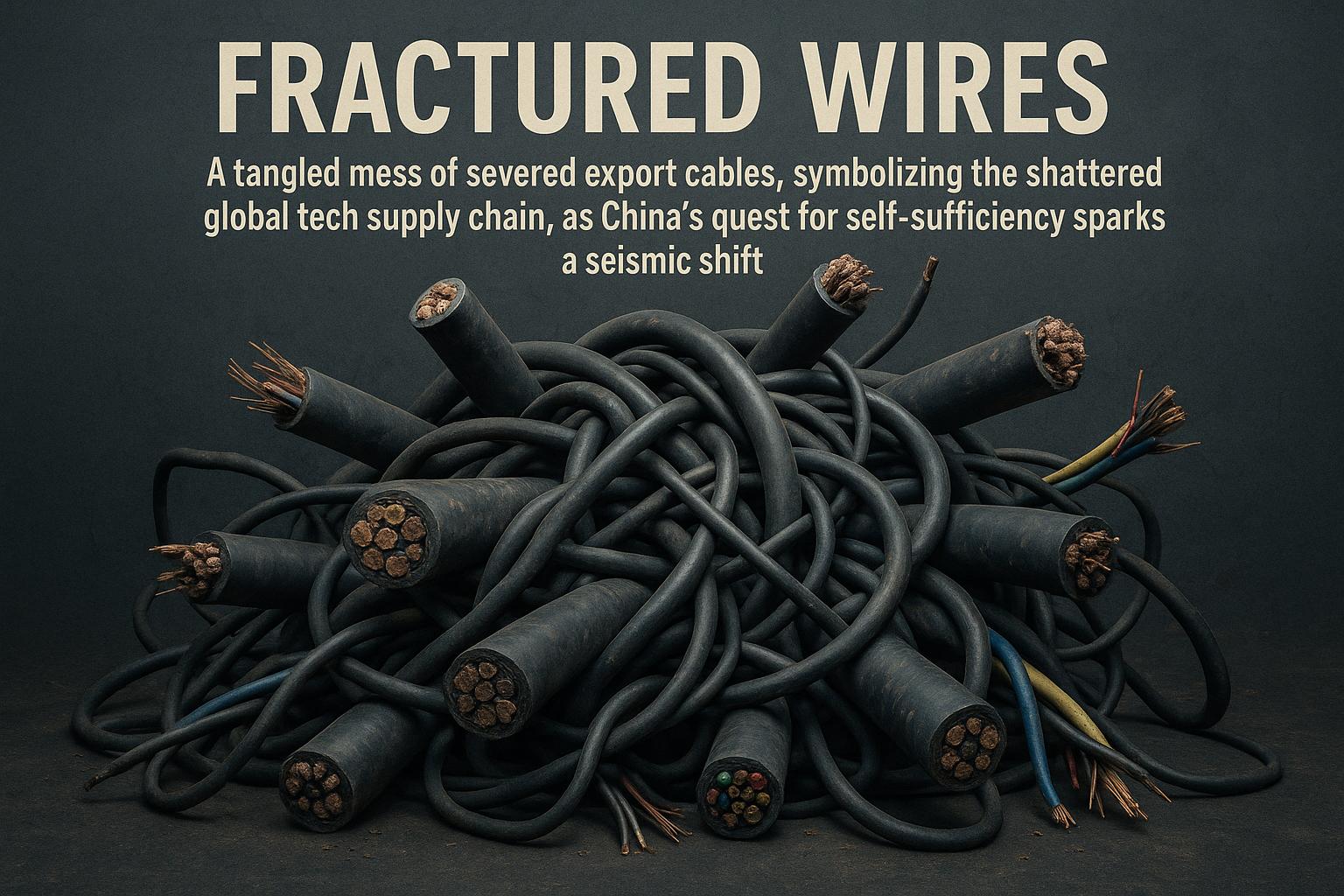The global technology sector is navigating a turbulent phase marked by intensifying geopolitical tensions, stringent U.S. export controls, and the broader impacts of an escalating technological rivalry primarily between the U.S. and China. What initially began as trade disputes have morphed into a strategic competition for technological dominance, especially in critical fields such as semiconductors and artificial intelligence (AI). This dynamic is profoundly reshaping global supply chains, escalating operating costs, and narrowing market access for many technology firms worldwide.
This prolonged "tech cold war" owes much to a timeline of escalating U.S. measures aimed at restricting China’s access to advanced technology crucial for its military and economic ambitions. These efforts began amid the U.S.-China trade war in 2018, with significant milestones including the blacklisting of tech giant Huawei in 2019 and subsequent restrictions on semiconductor-related exports to China by 2020. The Biden administration has maintained and expanded these controls, exemplified by the CHIPS and Science Act of 2022 and a sweeping set of export restrictions on cutting-edge semiconductor technologies in late 2022. These regulations, refined further in 2023 and 2024, target advanced AI logic chips and semiconductor manufacturing equipment, provoking China's retaliatory export controls on critical raw materials like gallium and germanium. More recently, the revocation of South Korean chipmaker SK Hynix's validated end-user status for its China operations necessitates individual licensing for technology exports, signaling renewed tightening of controls (Reuters).
Major U.S. chipmakers such as Nvidia, AMD, and Intel have felt these curbs acutely, with Nvidia alone reporting billions in lost revenue and a dramatic drop in market share within China’s AI chip sector. The losses extend to other firms like Synopsys, which saw a significant decline in sales and a related stock plunge attributed directly to these export restrictions, prompting the suspension of its financial guidance and operational changes in China. Industry-wide, the U.S. semiconductor sector faces an estimated $130 billion reduction in market capitalization, with projected annual sales losses of up to $83 billion and potential job cuts nearing 124,000 positions. Non-U.S. companies integral to semiconductor supply chains, such as ASML Holding NV from the Netherlands and Applied Materials, are similarly constrained by export limitations, affecting their revenues (FinancialContent, Reuters).
Conversely, these aggressive restrictions have spurred remarkable strides in China’s domestic technology industry. Chinese firms like Huawei, SMIC, and BOE Technology Group are accelerating efforts to substitute imported components with locally developed alternatives, buoyed by increased investments in domestic semiconductor and AI research and production capacity. This push towards self-sufficiency is partially supported by shifting global supply chain dynamics, where some non-U.S. Asian and European companies have benefitted from increased Chinese procurement as the country aims to reduce reliance on American technology. The partial relaxation of export controls on certain AI chips in 2025 has also offered a cautious boost, potentially unlocking tens of billions in sales for firms including Nvidia, AMD, TSMC, and Micron. Yet, this complex environment ensures an ongoing, dynamic struggle, with companies continuously adjusting strategies (FinancialContent).
The repercussions extend beyond bilateral tensions. U.S. export controls have a far-reaching extraterritorial impact, binding non-U.S. firms that use or resell U.S. technology to comply with American regulations. This has necessitated coordination with allied nations like Japan, the Netherlands, South Korea, and Taiwan through alliances and aligned export control policies, ensuring a united front but also raising concerns over market fragmentation and the search for alternative suppliers. Notably, the U.S. recently imposed sanctions on 32 entities—including 23 Chinese companies—accused of illicitly acquiring U.S. chipmaking tools and aiding military activities, underscoring the increasing linkage between technological controls and national security objectives (Reuters).
Meanwhile, global supply chain realignments reflect the industry's response to these geopolitical stresses. Companies are adopting "China+1" strategies to diversify manufacturing footprints to nations such as India, Vietnam, and Mexico. For instance, Foxconn, a key iPhone assembler, is ramping up its production in India amid reduced reliance on Chinese operations, despite the recent departure of some Chinese engineers. This strategy is emblematic of broader industry moves towards regionalisation and friend-shoring to enhance resilience. However, this diversification often comes with increased costs and operational challenges, foreshadowing inflationary pressures in the sector (Reuters).
Another contentious aspect emerges from revelations that several leading U.S. technology firms have played significant roles in enabling Chinese digital surveillance systems linked to human rights abuses. Investigations disclosed that companies including IBM, Microsoft, and Nvidia provided AI and cloud services that underpinned China’s expansive surveillance infrastructure, contributing to mass detentions and oppression, particularly targeting Uyghurs and political dissidents. This complex intersection of technology, commerce, and ethics highlights the challenging regulatory and moral landscape confronting global tech companies and policymakers alike (AP).
Looking ahead, the technology ecosystem appears poised for continued bifurcation into distinct spheres aligned with either U.S.-led or China-led blocs. This technological decoupling will likely foster divergent standards and ecosystems, potentially stifling interoperability and innovation. Businesses must adapt through heightened supply chain diversification, localisation of production, and development of geopolitically compliant product lines—such as Nvidia’s creation of China-specific AI chips. The shift from prioritising cost efficiency to supply chain resilience represents a fundamental transformation with lasting implications for companies and investors.
For investors, this new era mandates a vigilant, diversified approach. Market volatility driven by policy announcements and geopolitical developments will continue, with semiconductor firms at the forefront of these upheavals. Strategies should emphasise companies with flexible operations, robust risk management, and exposure diversified across regions less vulnerable to U.S.-China tensions. Given the rising risk of cyberattacks linked to geopolitical rivalry, investments in firms with strong cybersecurity capabilities are prudent. Ultimately, as technological leadership intertwines with national security, understanding and adapting to this evolving landscape becomes crucial for long-term commercial and investment success.
📌 Reference Map:
- Paragraph 1 – [1], [2]
- Paragraph 2 – [1], [4]
- Paragraph 3 – [1]
- Paragraph 4 – [1], [2]
- Paragraph 5 – [1], [3]
- Paragraph 6 – [6]
- Paragraph 7 – [1]
Source: Noah Wire Services
